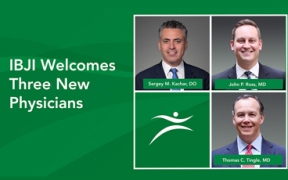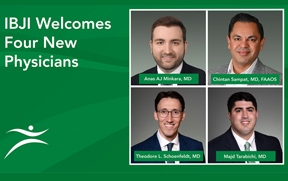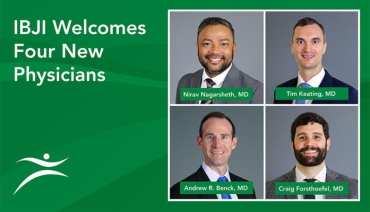When members of the Scoliosis Research Society gather this fall to observe the 50th anniversary of the renowned organization’s founding, one of IBJI’s experts will be on hand for the celebration. Steven Mardjetko, MD, is among the most highly regarded physicians in the world when it comes to scoliosis research, treatment and innovation. Dr. Mardjetko has been treating pediatric patients with spinal deformities since the 1980s. Over that time, he has witnessed and been part of some extraordinary advances in terms of how pediatric spine specialists diagnose, evaluate, and treat scoliosis and other pediatric spinal deformities. Below are some of the key developments in scoliosis knowledge from a recent interview with Dr. Mardjetko.
#1 – We now have definitive proof that bracing is effective.
The use of braces to correct abnormal spine shape has shifted in and out of favor over the past 50 years. Back in the 1970s, braces were standard treatment protocol for children and adolescents with spinal deformities like scoliosis. Questions arose, however, about the efficacy of brace treatment in the 1980s and some physicians stopped advising patients to use them, opting instead for surgical intervention. According to Dr. Mardjetko, bracing has now been rigorously researched and evaluated. Key research findings published in the New England Journal of Medicine confirm that bracing significantly decreases the progression of high-risk curves to the threshold for surgery in patients with adolescent idiopathic scoliosis. (Weinstein, M.D. Stuart L., et al. “Effects of Bracing in Adolescents with Idiopathic Scoliosis.” New England Journal of Medicine 369:1512-1521 (2013). Dolan, Ph.D., Lori A., et al) “Bracing works,” says Dr. Mardjetko, “and it frequently eliminates the need for surgery.”
#2 – Bracing technology has improved dramatically, both technologically and aesthetically.
“The braces of just a few decades ago were horrendous,” says Dr. Mardjetko. “They were bulky and uncomfortable and restricted a child’s ability to move. Most kids with scoliosis hated wearing them.” The newest braces are lightweight, fitted and barely visible underneath clothing. “They are also relatively comfortable, so most children function really well despite wearing a brace,” he explains. According to Dr. Mardjetko, comfort is paramount because it correlates to increased compliance. Braces are designed to capture remaining spinal growth and harness that growth to stabilize the spine. In order to have the greatest impact, braces should be worn approximately 16 hours each day by young patients with scoliosis. “Another amazing improvement is that today’s braces come equipped with tiny compliance monitors,” says Dr. Mardjetko. Sensors inside the brace measure body temperature, so spine specialists know how many hours a patient is actually wearing his or her brace. “What we’ve found,” explains Dr. Mardjetko, “is that once most patients realize their brace wear is being monitored, they are more likely to accept the fact that wearing the brace will help their spinal curve from getting worse. As a result, they are more likely to comply with the prescribed brace wear program.”
#3 – There has been extraordinary progress in surgical innovations.
One such innovation is the MAGEC spinal growth rod system for early onset scoliosis. Very recently approved by the Food & Drug Administration, this implantable “growing rod” device has a magnetically driven motor. Dr. Mardjetko was the first surgeon in Chicago to implant this system in a young patient earlier this summer. “In the past, children with severe progressive spinal deformities faced the prospect of multiple surgeries to correct the curvature of the spine as it grew,” explains Dr. Mardjetko. “With this device, the patient undergoes minimally invasive surgery to implant the MAGEC rod. The physician can then adjust and lengthen that implanted rod using an external remote controller. As the spine grows, we can lengthen the rod more frequently, using shorter distances and less force. It’s a much more natural method that eliminates the need for multiple surgeries and significantly reduces complications for the child.”
“We’ve come a long way since the Scoliosis Research Society was established,” according to Dr. Mardjetko. “By improving the ways we screen for, monitor and treat spinal deformity, today’s methods are safer, less invasive, and more effective than ever, so the prognosis for young patients with this condition is excellent.”
For more information about pediatric spinal deformity or about Dr. Mardjetko’s expertise in this specialty, please visit ibji.com/physicians/mardjetko-steven-md.




